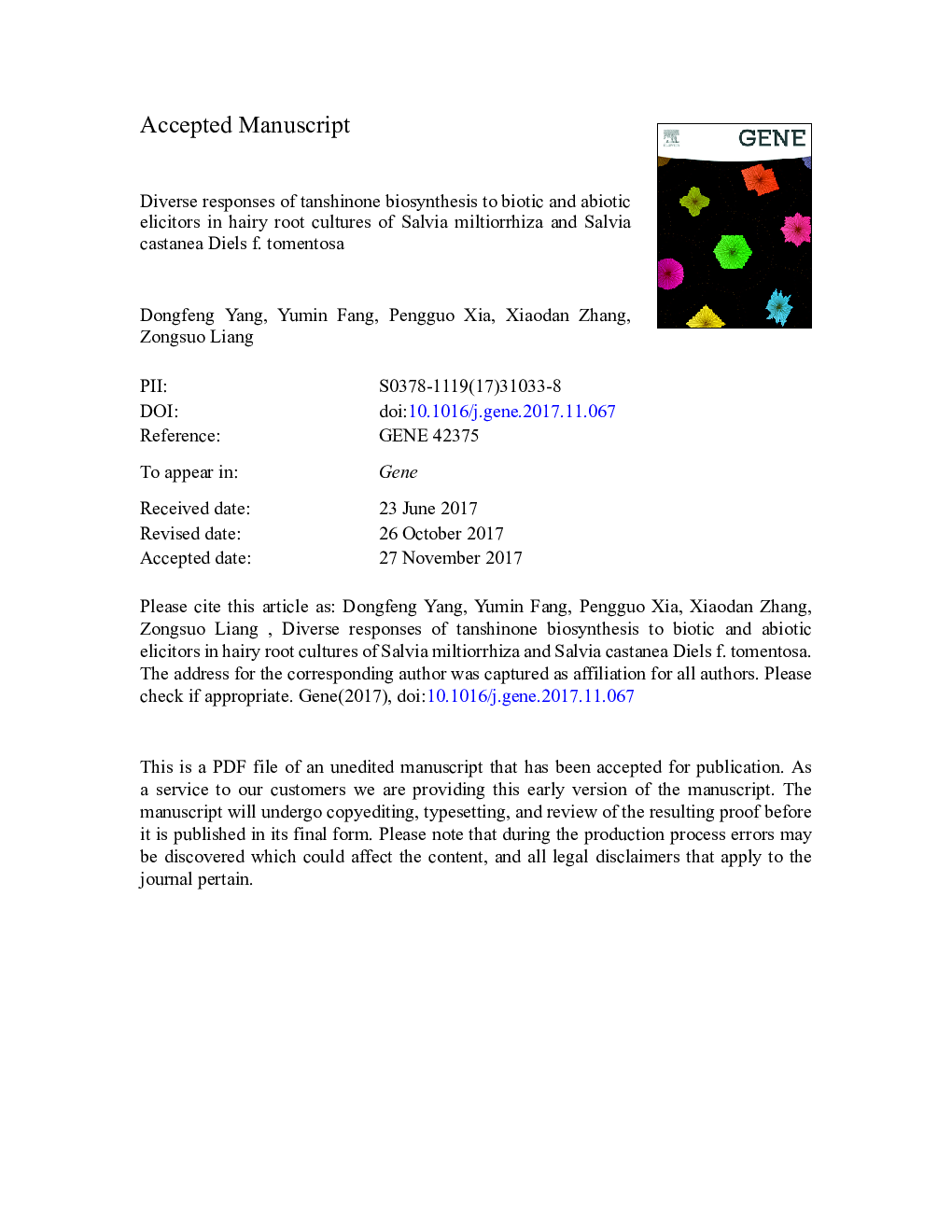| Article ID | Journal | Published Year | Pages | File Type |
|---|---|---|---|---|
| 8645801 | Gene | 2018 | 16 Pages |
Abstract
Salvia miltiorrhiza (S. miltiorrhiza) and Salvia castanea Diels f. tomentosa (S. castanea) are both used for treatment of cardiovascular diseases. They have the same bioactive compound tanshinones, but whose contents are hugely different. This study illustrated diverse responses of tanshinone biosynthesis to yeast extract (YE) and Ag+ in hairy roots of the two species. YE enhanced both the growth and tanshinone biosynthesis of two hairy roots, and contributed more to tanshinone accumulation in S. castanea than that in S. miltiorrhiza. Genes encoding 1-deoxy-d-xylulose 5-phosphate synthase (DXS2), geranylgeranyl diphosphatesynthase (GGPPS1), copalyl diphosphate synthase (CPS1), and two cytochromes P450 (CYP76AH1 and CYP76AH3) were also more responsive to YE in S. castanea than those in S. miltiorrhiza. Accumulations of dihydrotanshinone I and tanshinone I, and most biosynthetic genes in S. miltiorrhiza were more responsive to Ag+ than those in S. castanea. Accumulations of dihydrotanshinone I and cryptotanshinone were more responsive to YE, while tanshinone IIA accumulation was more responsive to Ag+ in S. miltiorrhiza. However, accumulations of other four tanshinones and related genes in S. castanea were more responsive to YE than Ag+. This study provides foundations for studying diverse specialized metabolism between the related species.
Keywords
DXRDihydrotanshinone IKSL1-deoxy-d-xylulose 5-phosphate reductoisomerase1-deoxy-D-xylulose 5-phosphate synthaseCryptotanshinoneGGPPCytochromes P450DXSAACTDMAPPHMGRcpsGGPPS3-Hydroxy-3-methylglutaryl CoA reductaseCYPsdimethylallyl diphosphatedry weighthigh performance liquid chromatographyHPLCCopalyl diphosphate synthaseGeranylgeranyl diphosphate synthasegeranylgeranyl diphosphate
Related Topics
Life Sciences
Biochemistry, Genetics and Molecular Biology
Genetics
Authors
Dongfeng Yang, Yumin Fang, Pengguo Xia, Xiaodan Zhang, Zongsuo Liang,
